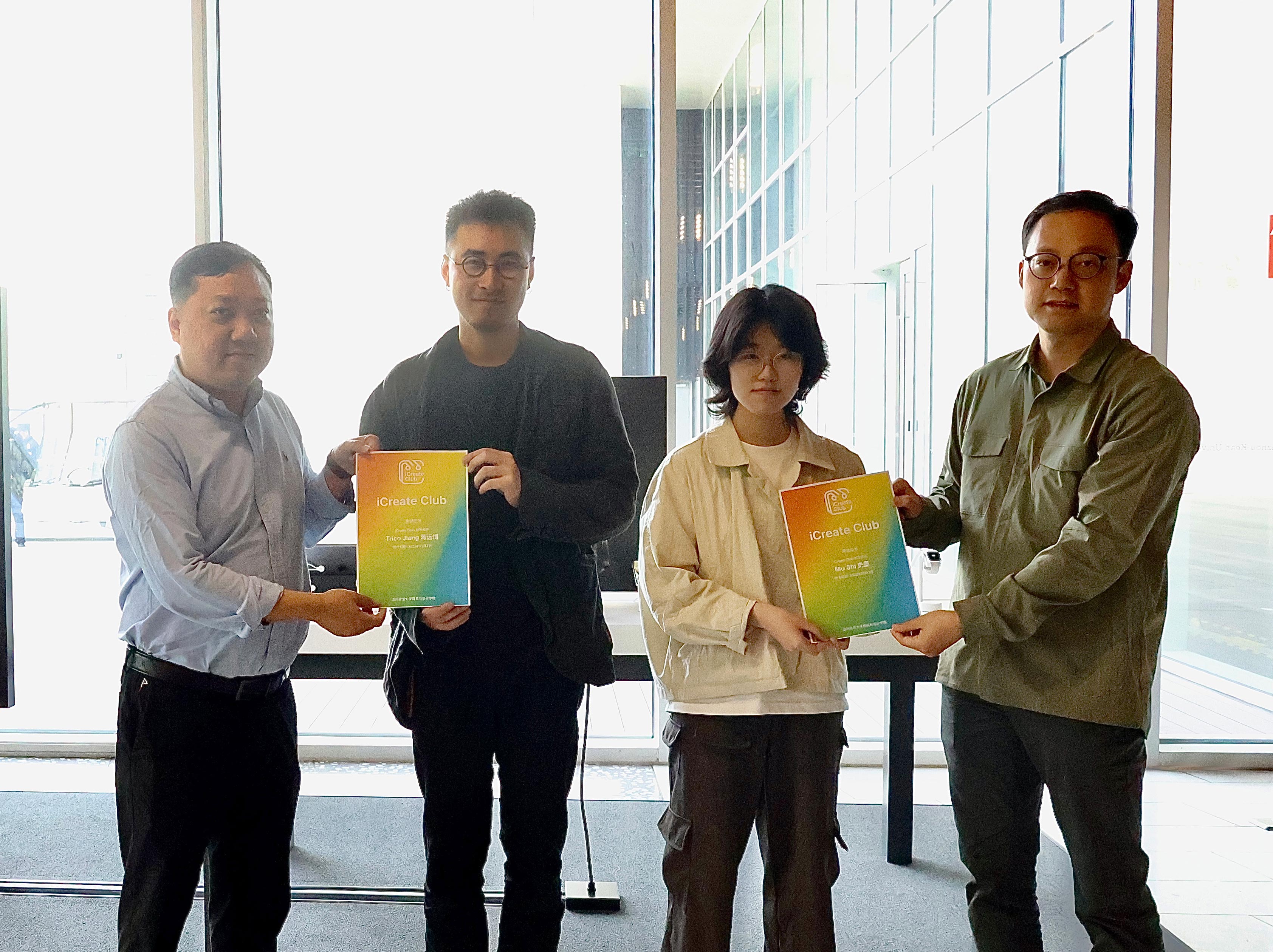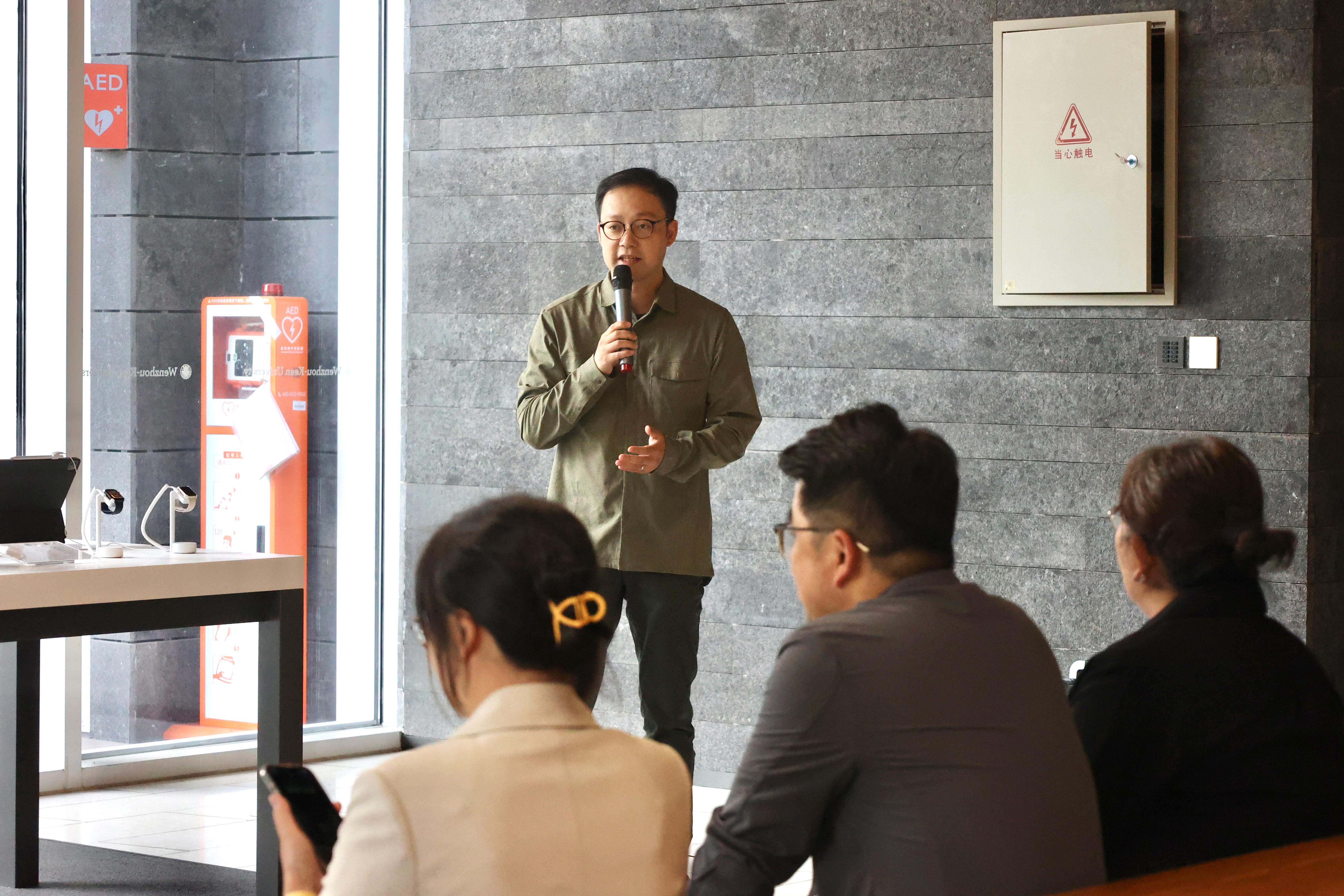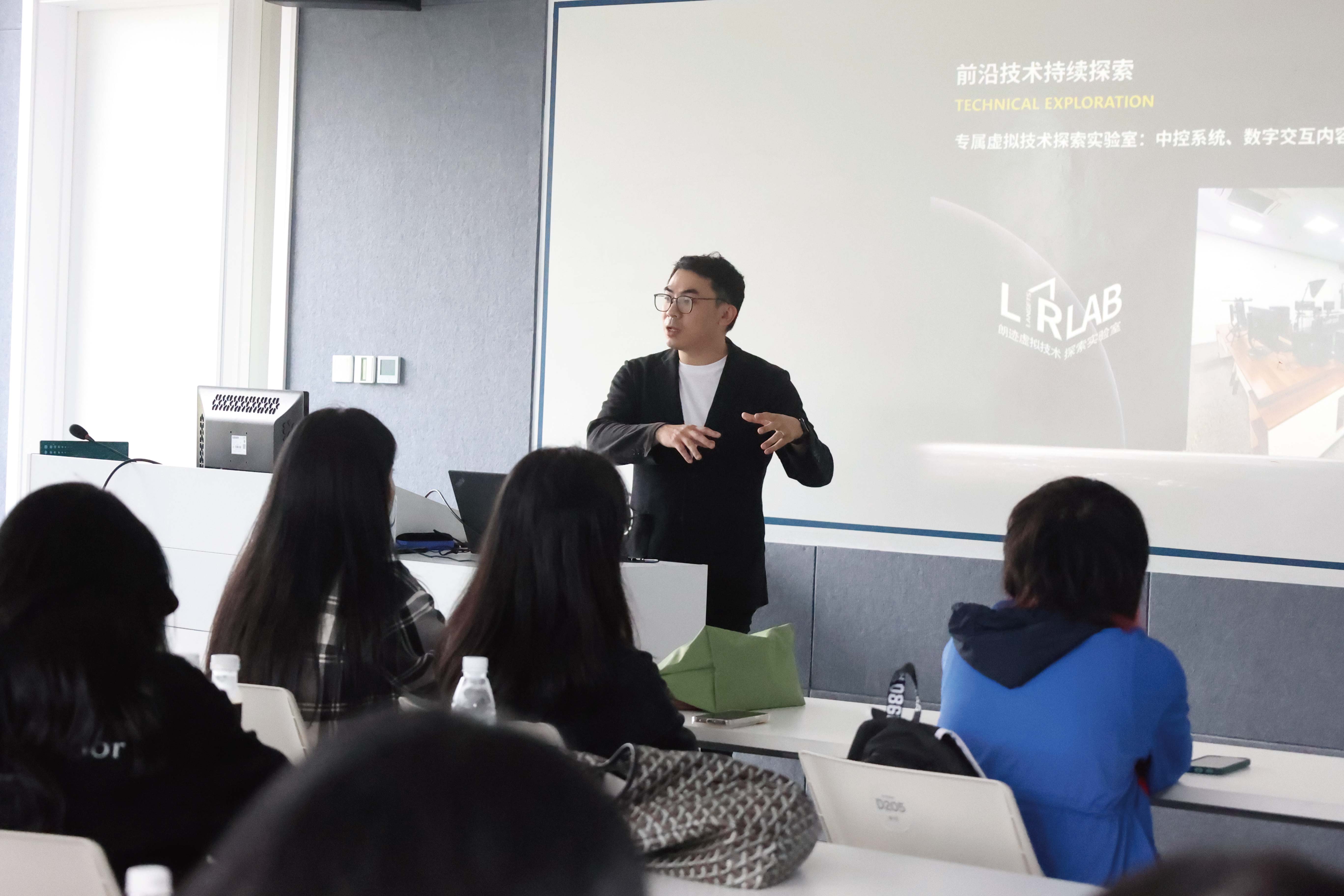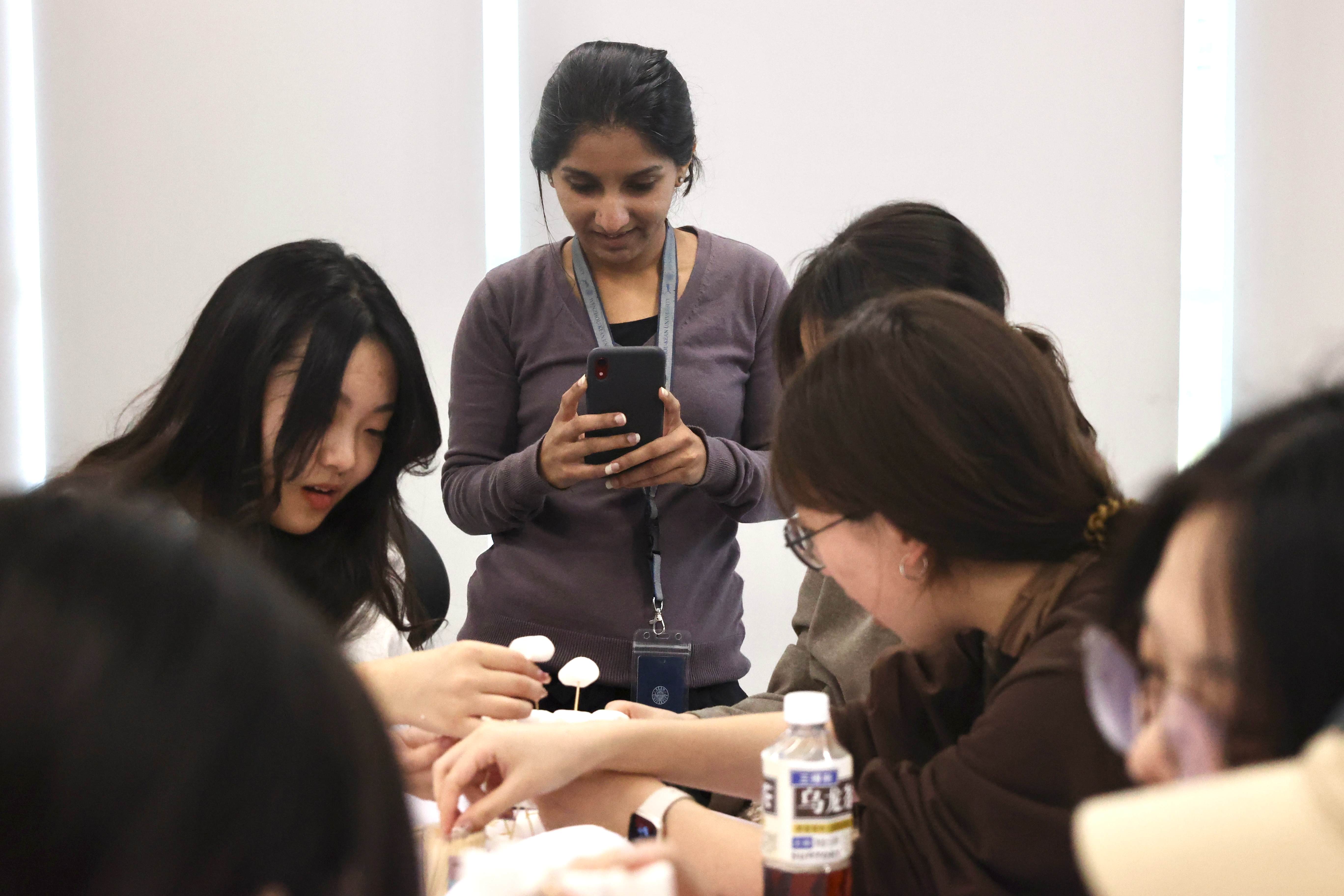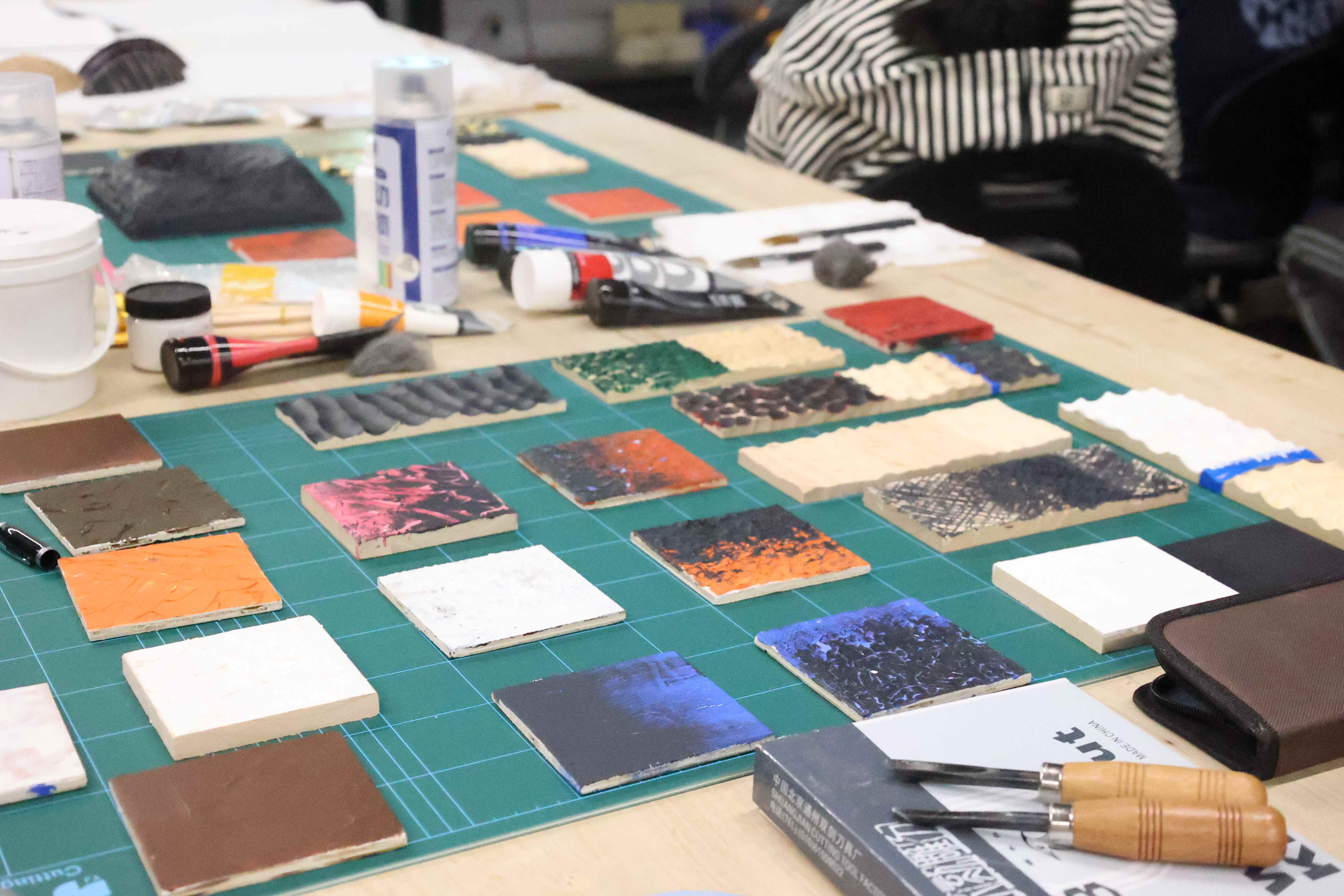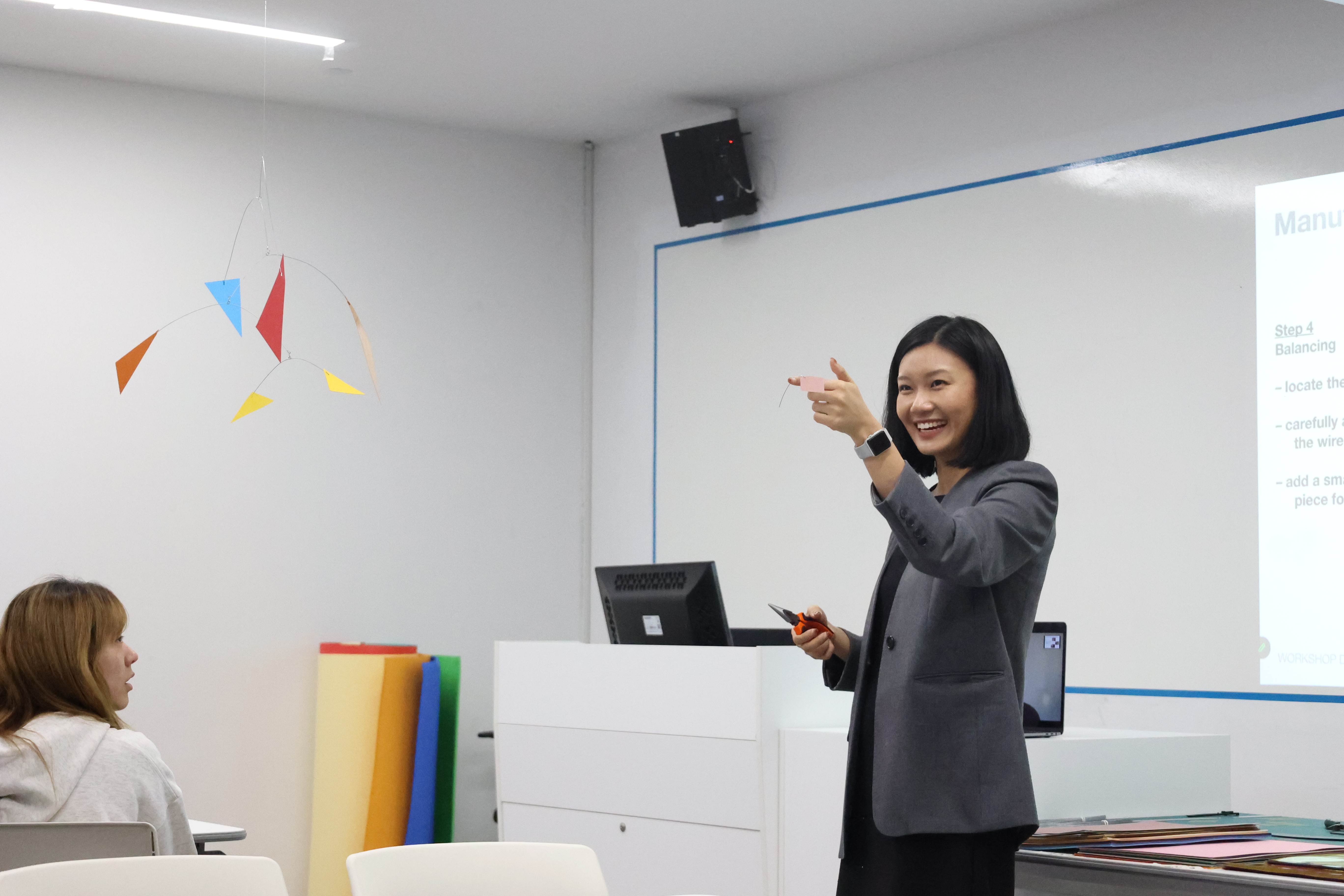On November 2nd, the Workshop Day of Michael Graves College of Architecture and Design at Wenzhou-Kean University concluded successfully. Professionals from the fields of design, film, and interaction, along with faculty members from the School of Design, gathered together to share their expertise and experiences, providing an unforgettable experience for us.
2023 Workshop Day Review
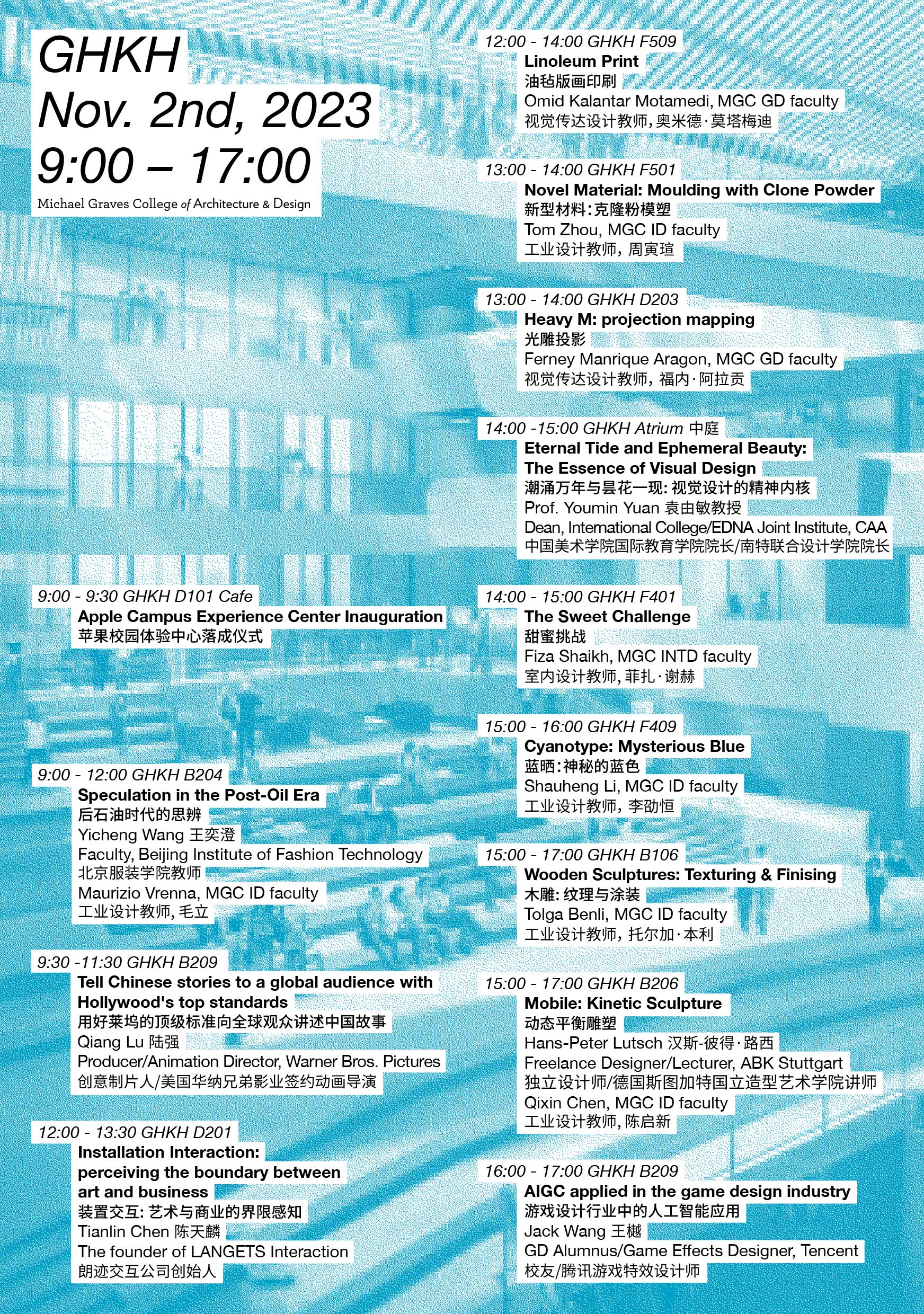
At 9:00 AM, the inauguration ceremony of the WKU Apple Campus Experience Center marked the beginning of this year’s Workshop Day. Guests from Apple Education Channel Manager Mr. Jie Jiang, the Education General Manager Mr. Qiwei Wan from Mei Cheng Company, Prof. Yaoyao Huang, the Executive Director of the School of Design, and Mr. Jun Meng, Associate Director of Office of Research and Sponsored Programs, and faculty and students attended the event. During the ceremony, Prof. Huang introduced potential collaborative projects and topics that could be explored with Apple in the future. She emphasized the potential of this partnership, which will provide the faculty and students of the university with more opportunities for in-depth research and practical experience in the fields of design and tech.
Additionally, a new club, “iCreate Club,” was officially established during the event. Mr. Qiwei Wan, the Education General Manager of Mei Cheng Company, presented the Club Supervisor Certificates and Club Student President Certificates to Trico, the faculty of Graphic Design, and student Shi Mo. The inauguration ceremony of the Experience Center concluded with a ribbon-cutting ceremony, marking the official commencement of this significant collaborative project.
The WKU Apple Campus Experience Center serves as a non-commercial platform to provide students and faculty with a one-stop experience of innovative technology products and educational technology services. Through this platform, both parties will collaborate to organize and host various campus activities, including technology salons, lectures, workshops, and more. This platform will also support student participation in academic competitions and research on industry-academia collaborative topics.
Following that, the animation director of Warner Bros. Animation, Lu Qiang, delivered an engaging lecture titled “Telling Chinese Stories to the World with Hollywood’s Top Standards” in Classroom B209 of Ge He Kai. Lu shared his experiences in making movies in the United States with his fellow students in a humorous manner. Despite having limited creative funding, he produced a high-quality animated film, “Return to the Ocean,” by gathering global professional talents, including recruiting recent graduates. He also shared the entire process of animation film production with his fellow students, including everything from initial sketches and scene design to the final character design. Director Lu Qiang’s experiences inspired the students in attendance to give their 100% effort to their beloved industry.
At noon, Mr. Tianlin Chen, the founder of LANGETS Interactive Company, delivered a lecture titled “Installation Interaction: perceiving the boundary between art and business”. Focusing on interactive installations, he highlighted that interactive design is a field that involves user-technology interaction and can be applied to various applications, including digital storefronts, exhibitions, commerce, entertainment, and more. These installations are designed to engage users in innovative ways to convey information, provide entertainment, or achieve other objectives.
During the lecture, he discussed several intriguing projects and installations, such as the “Magic Door,” “Track Mirror,” digital storefronts, interactive trash cans, real-time content generation, interactive recognition technology, and storefront design. These projects showcased innovative thinking and technological applications in the field of interactive design. Mr. Chen emphasized that interactive technology is not just a “technical” matter but also an “emotional” one.
Finally, Chen Tianlin emphasized the importance of grounding artistic creativity in practical thinking and individual completeness. He stressed the significance of passion, curiosity, and a sense of national pride and shared hundreds of interactive case examples with the students.
At 2:00 PM, a lecture titled “Eternal Tide and Ephemeral Beauty: The Essence of Visual Design” was delivered by Prof. Youmin Yuan (the doctoral supervisor at the China Academy of Art, Dean of the International School of Education/Nantes Design Joint College, and the Leading Designer of the G20 Emblem and Asian Games Emblem & Incon System ) with a great enthusiasm from students and faculty.
In this lecture, Prof. Yuan expressed that designers, as individuals, should contemplate their relationship with projects, society, and the space-time universe. He discussed how designers can play an active role in contemporary industrialization and cultural development. He stressed the importance of designers carrying social responsibility and actively participating in real societal production, ultimately achieving self-design as a designer.
Prof. Yuan shared his creative thinking and practical cases from both himself and the Studio 0909, focusing on various aspects such as “Innovation in Visual Production,” “Uncertain Visual Exploration,” “Using Content as a Design Method,” “Design as a Social Service,” and “Design as Social Aesthetic Education.” He concluded the lecture by emphasizing the design process for the emblem and sports icon system of the 2022 Hangzhou Asian Games.
Finally, the lecture titled “AIGC applied in the game design industry” presented by Wang Yue, an honored alumnus of the Graphic Design program and a Tencent Game VFX Aritist, brought the Workshop Day to a successful close. Wang Yue shared a wide range of use cases for artificial intelligence in the field of game design, spanning text, graphics, audio, video, 3D, and more with the students in attendance. He not only showcased the immense potential of artificial intelligence in game design but also sparked the students’ interest in this field. His case studies and practical experience sharing provided valuable insights to the faculty and students, enabling them to gain a deeper understanding of the future trends in the game design industry.
Eight workshops guided by invited guest speakers and faculty members from the Michael Graves College of Architecture and Design were also conducted with great enthusiasm in the GHK Hall on that day.
In the morning, a workshop titled “Contemplation in the Post-Petroleum Era,” led by Yicheng Wang, faculty from the Institute of Fashion Technology and Maurizio Vrenna, faculty from Industrial Design program of MGC, was conducted with great enthusiasm. In this engaging and educational workshop, they guided both faculty and students to Using innovative research such as Triboelectric Nanogenerator as a technological foundation and design methods as guiding pathways, innovative attempts and conceptual prototype designs will be conducted on the future possibilities of topics such as wear, sustainable health, sustainable travel, sustainable food, and sustainable home at the levels of materials, products, services, structures, systems, etc.
In the workshop “Linocut Print” led by Omid Kalantar Motamedi of Graphic Design, he inspired a strong interest among the students in the art of linocut printing. In this creative workshop, students explored the intricate process of linocut printmaking, inspiring them to uncover the potential of color and texture. This workshop provided students with a bridge between tradition and modernity, art and utility, fostering a comprehensive educational experience that will help them develop more well-rounded visual communication design skills.
In the workshop activity “Novel Material: Moulding with Clone Powder ” led by Industrial Design teacher Tom (Yinxuan Zhou), he guided students in using clone powder and model parts to create and replicate human organs (using the hand as an example). This allowed students to understand common techniques and processes in rapid prototyping.
In the “Heavy M: projection mapping” workshop, led by Graphic Design teacher Ferney Aragon, students had the opportunity to experience a unique connection between the virtual and real worlds through dazzling light projection and the Heavy M software. In this activity, students learned how to use Heavy M software and achieved and understanding of the interaction between sound and light. This comprehensive learning experience will contribute to their better understanding of the intersection between the virtual and real worlds, laying a solid foundation for future explorations in the fields of art and technology
In the “Sweet Challenge” workshop led by Interior Design teacher Fiza Shaikh, she ingeniously utilized common items like toothpicks and marshmallows to provide students with a creative and enjoyable small-scale architectural challenge. During this activity, students learned how to construct stable structures with unique designs. They explored the characteristics of materials and gained an understanding of how different shapes and connections can impact the stability of their architectural creations.
Industrial Design teacher Shauheng Li presented a workshop titled “Cyanotype: Mysterious Blue” to the students. Cyanotype is an ancient photographic printing process and a historical method for reproducing engineering drawings, also known as blueprints. Shau guided the students in exploring and creating cyanotype artworks using various materials and plant specimens. They employed special photosensitive materials and exposure processes to transform designs or patterns into blueprints with a blue background.
In the workshop “Wooden Sculpture: Texturing and Finising wood” led by Industrial Design professor Tolga Benli, students explored the art of woodcarving, delving into techniques like sanding, staining, and sealing to infuse vitality into their creations. By combining the elegance of woodcarving tradition with the versatility of acrylic paints and gold leaf, students incorporated traditional craftsmanship with modern materials, creating works that possess a blend of both traditional and contemporary characteristics.
In the workshop led by Hans-Peter Lutsch, a lecturer at the State Academy of ABK Stuttgart in Germany, and Industrial Design teacher Qixin Chen, students were encouraged to explore the joy of creation. They guided students to use simple and lightweight materials such as colored plastic sheets and wire to craft captivating dynamic balance sculptures. Through clever design and assembly, students created sculptures that could maintain balance while exuding a sense of dynamism. These works not only emphasize aesthetics but also highlight the concept of balance, offering the audience a dual experience of both visual and sensory pleasures.
Rich workshop activities throughout the day allowed both faculty and students to have an unforgettable and enjoyable time.
Let’s meet again next year!




